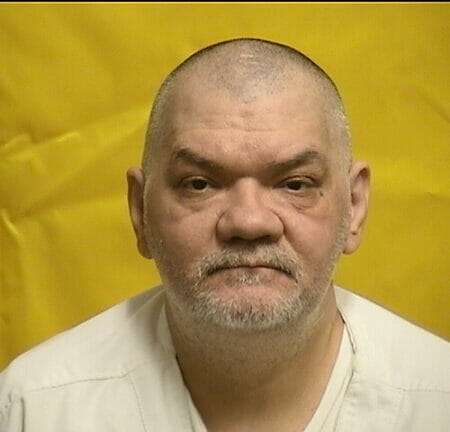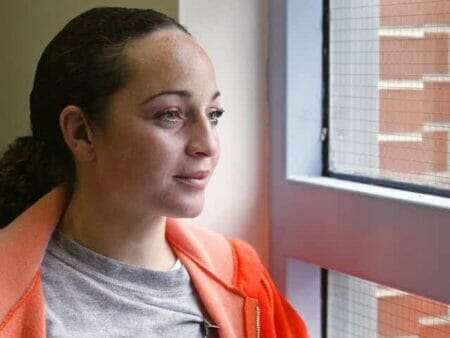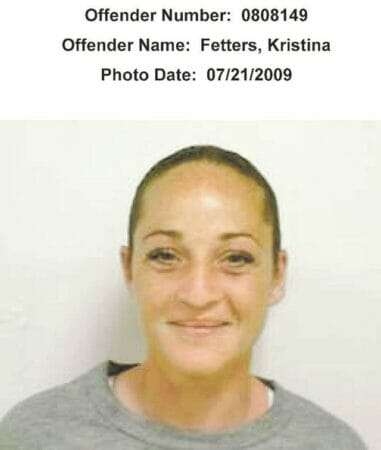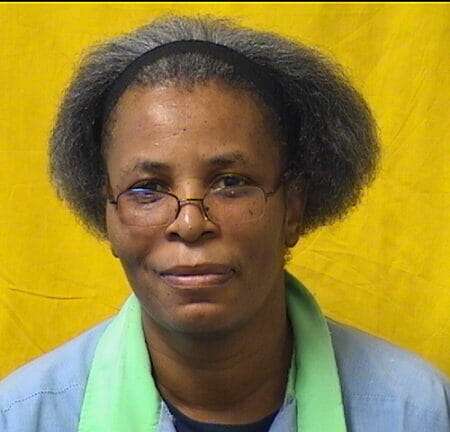
Stanley Adams was sentenced to death by the State of Ohio for a triple murder. According to court documents Stanley Adams would murder a woman, sexually assault and murder a twelve year old girl and would sexually assault and murder another woman. Stanley Adams would be convicted and sentenced to death.
Stanley Adams 2021 Information
Number A420071
DOB 08/23/1966
Gender Male Race White
Admission Date 10/12/2001
Institution Chillicothe Correctional Institution
Status INCARCERATED
Stanley Adams More News
State’s evidence From Christmas 1998 until March 1999, Adams and his girlfriend, Janelle (“Nelly”) Hartle, lived with Esther and Ashley on Dickey Avenue in Warren. After March 1999, and at the time of the murders, Adams and Janelle and their infant daughter lived on Mahoning Avenue in Champion, Ohio. James Hartle, who sometimes lived with Esther, was the father of Ashley and Janelle, who were half-sisters.
{¶ 3} On the afternoon of October 11, 1999, Adams borrowed a blue 1991 Chevrolet Cavalier, Ohio license number BAB 2830, from his neighbors, Mike and Kelly Henry. Adams then drove to James Hartle’s house, where he asked to borrow $300 from Hartle to buy a car. Hartle declined to give Adams any money.
{¶ 4} Later that evening, Adams attended a drug party at the apartment of his friend, Mallory “Stacie” Jackson. In addition to Adams, guests included Renee Smith, Patricia Litsinger, and Derwin (“Stormin’ ”) Norman. That night Adams was wearing a white T-shirt, blue pants, and white tennis shoes. When Smith saw Adams, whom she had known for five years, he had $40 “and bought crack cocaine with it.” Later, Adams told Litsinger that he was “broke,” but he offered cocaine to her in exchange for oral sex. Litsinger refused.
{¶ 5} After that, Adams left and told Smith that he was leaving “to get some more money.” Smith reported that Adams was gone a long time. By the time Litsinger left, around 11:15 p.m., Adams had already left by himself in his search for more money.
{¶ 6} That same night, October 11, Luetta Simmons, who lived across the street from Esther and Ashley, noticed that a dark-colored car pulled into Esther’s driveway at 11:45 p.m., and that the car left around 12:15 a.m. The taillights on this car resembled the taillights on a Chevrolet Cavalier that Simmons had once owned. Simmons later noticed that neighborhood dogs were barking an in unusually “loud and obnoxious” manner.
{¶ 7} Adams returned to Jackson’s apartment. According to Smith, Adams “had blood all over his hands; * * * on his shirt, on his pants, and on the tip of his shoes,” and some of the blood appeared wet. In his pocket, Adams had “[m]oney with a whole bunch of blood on it.” Litsinger also observed that after Adams returned, he had blood on his hands and on his jeans.
{¶ 8} At some point after he returned, Adams took his bloody shirt off. Norman recalled seeing Adams at the apartment when he “didn’t have a shirt on,” had “blood on him,” and had a roll of money, some of which had blood on it.
{¶ 9} Later, Adams again left the apartment, but this time he left with Jackson and Norman to get more drugs. Adams, driving a blue Cavalier, dropped Norman off to buy the drugs. Around 2:00 a.m., while Adams was driving around the block, Warren Police Sergeant Robert Massucci pulled Adams over because the Cavalier had only one headlight. Sgt. Massucci noticed that although the weather was cold, Adams was not wearing a shirt, and that Adams had blood on his pants, including a spot approximately four inches by six inches.
{¶ 10} Warren Police Officer Jeff Miller, who stopped to assist Massucci, frisked Adams and discovered that “his pants were all wet and sticky, * * * gooey.” With the aid of his flashlight, Miller discovered that Adams had blood on his hands, right arm, and pants, and Miller reported that the amount of blood suggested that Adams had “field dressed a deer.” Adams told Miller that he had cut his hand, but Miller looked and saw no cuts. In the back of the Cavalier, Miller noticed tools and toolboxes.
{¶ 11} Adams told Sgt. Massucci that he lived on Dickey Avenue, although his driver’s license listed a different address. The officers then let Adams go with a warning about the headlight. Later, Janelle recalled that Adams had come home “in the middle of the night.”
{¶ 12} Around noon on October 12, 1999, Esther’s friend, Donna Frederick, found Esther’s “cold” body inside the front door of Esther’s home. Frederick called police. A neighbor reported that she had seen Esther and Ashley alive the previous afternoon around 5:30 p.m.
{¶ 13} Police found Esther’s body lying face-down in a pool of blood at the bottom of the stairs. On the stairs and stairwell walls, police found blood drops and smears. Police found Ashley’s body in an upstairs bedroom. Dr. Humphrey Germaniuk, a forensic pathologist, arrived at the crime scene around 1:00 p.m. that day and estimated that Esther and Ashley had been dead “eight, ten, 12 hours at least.”
{¶ 14} Dr. Germaniuk, who later performed an autopsy on Esther, concluded that she died as a result of “[m]ultiple blunt force traumatic injuries and multiple sharp force traumatic injuries” with “at least four distinct stab wounds involving the neck and head.” Although police found pieces of a broken broom near the bodies of Ashley and Esther, police found no weapon that might have caused Esther’s injuries. Dr. Germaniuk concluded that in inflicting the puncture wounds on Esther, the killer used “some type of tool that has an acute angle” and two prongs, such as a certain type of crowbar.
{¶ 15} Ashley’s body lay upstairs on a bedroom floor next to the bed. Her body was nude and posed, with her legs spread apart. An electric cord had been wrapped five times around her neck, and one end of the cord was in her hand. A bracelet and two earrings had been placed on Ashley’s lower abdomen. After an autopsy, Dr. Germaniuk concluded that Ashley had died as a result of “strangulation associated with blunt force trauma to the head.” Ashley’s body also revealed multiple injuries and bruises to the genitalia as well as brain swelling, contusions to the head, and lacerations to the mouth.
{¶ 16} Dr. Germaniuk also completed a rape kit examination during his autopsy of Ashley and obtained swab samples from her body cavities. Forensic Scientist Steve Wiechman, from the Ohio Bureau of Criminal Identification and Investigation (“BCI”), concluded that rectal, vaginal, and oral swabs from Ashley’s body tested positive for semen.
{¶ 17} After later tests, Meghan Clement, an expert in DNA analysis at LabCorp, an independent testing laboratory, conducted polymerase chain reaction (“PCR”) analysis of DNA on the oral and vaginal swabs from Ashley’s body and concluded that they contained a DNA mixture. Adams and Ashley could have both contributed DNA to the mixture, and nothing in the analysis suggested that anyone else had contributed DNA to these specimens. The rectal swab, while testing positive for semen, was insufficient to yield a DNA result other than Ashley’s DNA.
{¶ 18} Dr. P. Michael Conneally, a Distinguished Professor of Medical and Molecular Genetics at Indiana University Medical Center, who is an expert on genetic statistics, agreed that genetic markers for the secondary DNA contributor in the vaginal swab matched Adams, who is Caucasian. A similar DNA profile occurs only once in 77,000 Caucasians, once in 2.3 million African-Americans, and once in 128,000 Hispanics.
{¶ 19} At the crime scene, police found no money in the house. The bedroom where Ashley’s body was found was in disarray, as if it had been ransacked. Two dressers were overturned, and blood spatters were found on the ceiling, floor, and on dresser contents. BCI Forensic Scientist Wiechman subjected two bloody sheets from the bedroom to forensic analysis. Wiechman found 17 presumptive semen stains on different parts of one sheet, tested six of them, and confirmed that three of these were semen stains.
{¶ 20} Jennifer Duvall, an Ohio BCI forensic scientist, found DNA from semen stains in several areas on the same sheet. Adams could not be excluded as a contributor to the DNA in these stains, and his DNA was consistent with DNA in the stains. Duvall testified that DNA found at one particular site, which was identical to Adams’s DNA, would be found only once in 21.1 million Caucasians and once in 1.9 million African-Americans. When Adams and Janelle lived with Esther and Ashley seven months previously, they slept in a downstairs bedroom and never used any of the upstairs bedrooms.
{¶ 21} On October 13, police seized the blue Cavalier that Adams had driven on October 11 and 12, which Mike Henry had loaned him. Forensic testing disclosed that the steering wheel, one of the floor pedals, and the headlight lever in the Cavalier tested positive for blood, but the quantity was insufficient for analysis. On October 19, Mike Henry asked Adams why police had found blood in Henry’s car after Adams had borrowed it. During this conversation, Adams denied any responsibility for the murders.
{¶ 22} On October 20, police interviewed Adams after fully advising him of his Miranda rights. Adams waived those rights and gave both an audiotaped and videotaped statement of his activities on October 11 and 12. In these interviews, Adams initially denied any knowledge of the murders. After continued questioning, Adams admitted that he had stopped at Esther’s house the night she was killed and that he had briefly entered the residence. Adams claimed that he had fallen over Esther’s body and had then gone upstairs and found Ashley’s body. He quickly departed, and he did not tell anyone what he had found. Adams admitted that on October 12, he had burned his bloody tennis shoes and trousers. In Adams’s backyard police found a pile of ashes that contained a belt buckle and shoe eyelets.
{¶ 23} In addition to the police, Adams told others that he had discovered the bodies on the night of October 11 but had not notified authorities. On October 26, he was “on the verge of crying” when he told his friend, Kevin Clements, that he had found the bodies and had “tripped over Esther.” He also told his girlfriend, Janelle, and his sister, Tina Maus, that he had tripped over Esther’s body in the house that night. Later, he admitted to Tina that he had also found Ashley’s body.
{¶ 24} Defense case The defense moved for acquittal under Crim.R. 29, and the trial court denied the motion. The defense then recalled Detective Jeffrey Hoolihan, one of the investigating detectives. Detective Hoolihan agreed that police did not take certain investigative steps, such as examining an open window or a jewelry box for fingerprints, searching the neighborhood for weapons, or pursuing James Hartle as a murder suspect.
{¶ 25} Procedural history The grand jury indicted Adams on three counts of aggravated murder involving the deaths of Ashley Cook and Esther Cook, aggravated burglary, kidnapping of Ashley, and three counts that he had raped Ashley.













